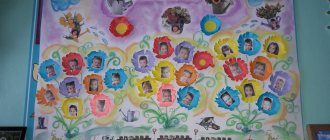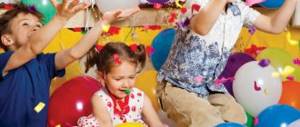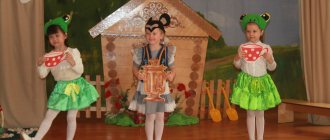Children's races are gaining popularity in Russia: at almost any start, in addition to standard adult distances, the organizers also organize children's competitions. As a rule, this is a run from 300 to 2000 meters. This format is created for running enthusiasts who can participate in competitions with the whole family. Mass starts give children and their parents the opportunity to understand whether athletics can become their desired choice.
We talked with the head coach of the Russian national athletics team, Yuri Borzakovsky, about what age you can start running, how young runners should be trained, and what to do for those who want to send their child to an athletics school.
At what age can children start running?
According to federal standards, a child can begin athletics at the age of 9 - it is from this age that they are enrolled in a sports school. But life has changed dramatically, and now children show interest in running much earlier. This is facilitated by the parents themselves, who actively take part in mass amateur races, and by the promotion of a healthy lifestyle.
Therefore, it is now not uncommon to see a baby running in the park with his dad or mom. And the marathon organizers are ready to register children from 6 years old for the races.
Distances in children's races vary from 300 m to 2 km. A special program is not required in preparing a young athlete. Children are usually active at this age and spend a lot of time outside and on playgrounds, where they spend energy and strength. The runs themselves can take from 200 meters to 1 km; it is better if these are games of “catch-up” or various relay races. And a competent coach or parent does just that.
Sometimes you can use a 5-minute run to warm up. But! There is no need to force a child to run long distances that are incommensurate for his age. This will not lead to anything good, but will simply discourage the desire to run. Therefore, we make the loads interesting and exciting! Then the child will be willing to spend time and happily go to any training session.
Subscribe to “Marathon Man” on Telegram. Announcements of articles and useful selections every week.
Under no circumstances should you set tempo goals for your child. The child must feel for himself how to run and at what speed. Before the race, the child needs to be shown the entire distance that is to be run, comparing it with something familiar. For example: “Do you remember how we ran from the zoo to the lake? There's just as much to run here! You've run this distance many times." Naturally, visual monitoring of the condition of the child’s skin color and fatigue has not been canceled.
Running as a main component of a healthy lifestyle for children of senior preschool age
2. Systematicity. The effectiveness of physical exercise, i.e. their influence on the human body is largely determined by the system and sequence of impacts of load requirements. It is possible to achieve positive changes in the development of general endurance if strict repeatability of load requirements and rest, as well as continuity of the training process, are observed. When working with beginners, days of physical exercise to build endurance should be combined with days of rest. If running is used, it must be combined with walking, i.e. walking here acts as a rest before the next run.
3. Gradualism. This rule expresses the general trend of systematically increasing load requirements. Significant functional changes in the cardiovascular and respiratory systems can be achieved if the load gradually increases. Consequently, it is necessary to find a measure of increased loads and a measure of the duration of consolidation of the achieved changes in various body systems. Using the uniform exercise method, it is necessary, first of all, to determine the intensity and duration of the load.
During preschool age, the body's energy resources are consumed. on age-related development, so too much stress can damage growth processes. The child should gradually develop general endurance, that is, endurance in prolonged work of moderate intensity, which increases the function of the main body systems.
Running requires good coordination of the movements of the arms and legs, correct posture, and, depending on the type of running, placing the foot on a support is appropriate. Repeated repetition of individual cycles (push, flight and landing) allows you to run for a long time without experiencing overexertion, developing endurance [4].
Preschool children have great potential for demonstrating general endurance. The level of development of this quality in children depends on age, gender and level of preparedness. According to V.G. Frolov, it is advisable to develop general endurance by running at an average speed, jogging, and prolonged hopping and jumping.
The main form of developing endurance in preschool children is systematic outdoor activities, the main content of which is 2-3 outdoor games. In these games, half the time is spent running, alternating with walking, general developmental exercises, climbing and throwing.
Running at a steady, slow pace is useful for developing endurance. It is used in working with children of all age groups. For older children, the duration of the run is 2-3 minutes. This type of running is used in exercises and games with pronounced continuous motor activity. It is advisable to use long, slow running in the air, including it in outdoor games.
With children 5-6 years of age, special work is being done to develop their motor qualities of speed and endurance, for which the length of running distances is increased. Children compete in a speed run over a distance of 20-30 m or repeat a fast 10 m run 3-4 times.
Children 6-7 years of age have expanded opportunities for developing endurance. Children are asked to run at an average pace over rough terrain for a distance of 200-300 m. Running, alternating with walking, on sections of 100-150 m is repeated 3-4 times. The ability to run slowly at a low pace for 2-3 minutes is consolidated. If possible, you should often use barefoot running on sand, shallow water, earthen and grassy paths with turns and slopes, making sure that there are no objects that could lead to injury. It is advisable to carry out such running in spring, summer and even late autumn, without fear of light, drizzling rain. In addition to hardening, running in adverse conditions strengthens children’s character, their perseverance, endurance, and creates the habit of doing physical exercise every day.
In order to develop endurance, running at a slow pace becomes longer - up to 1.5-2 m/s. The teacher first shows how to run at a slow pace, and then one of the children demonstrates his ability to run evenly and leisurely. It is more advisable to carry out slow running in natural conditions in the air.
Chapter II. Methods of using running as a means of developing endurance in preschool children
2.1 Development of endurance in physical education classes
In physical activity classes, we proceed from the principle of rational organization of physical activity [10].
Its essence is as follows.
1. The predominance of cyclic, primarily running (speed 1.0-1.2 m/s), exercises and their combinations in all types of motor activity of children to train and improve general endurance - the most valuable health quality.
2. The advisability of frequent changes of exercises with multiple (up to 8-12) repetitions of one exercise; multivariance is possible. We proceed from the fact that for children 4-6 years old it is not advisable to frequently change exercises, but multi-variance is preferable. It is easier for a child to remember and qualitatively master the “pattern” of a movement with infrequent changes and frequent repetition. It seems to us advisable to have a small number of exercises (set) for the whole year with a set of various benefits (multiple options).
3. The need to achieve a conscious attitude of children towards performing exercises. This is possible and easily accessible to children under the guidance of an adult with the help of gymnastic aids.
4. Creating conditions for the predominance of positive emotions in all types of motor activity. To prevent the exercises from seeming too boring, you can introduce an element of competition.
5. Performing movements should be easy and beautiful. This is only possible with the guidance of an adult with the help of gymnastic aids, and also provided that the exercises are well known to the child.
6. Classes should be held daily.
7. An important and main section of physical education classes and walks is outdoor games with cyclic exercises.
8. Motor density is 80%, for walking 60% (Appendix 1).
9. Physical education classes are conducted indoors and outdoors with musical accompaniment, which is effective only if the movements are performed very clearly. This once again emphasizes the inappropriateness of frequent changes of exercises.
When learning new movements, as a rule, preparatory and lead-in exercises are used. When used systematically, lead-in exercises promote rapid and successful learning. In this case, the child involuntarily takes the desired body position and performs the movement in a certain way. This is how exactly those muscle sensations appear that correspond to the description and explanation of the movement. They must be similar in structure to the movement being learned as a whole or to some part of it.
In every movement there is the most important part that determines its structure - the leading link and additional parts. First, leading exercises are selected that are close to the leading link of a given movement, then, when they are consolidated and improved, those that are close to additional ones are selected.
Leading exercises cannot be repeated many times and thus brought to skill. Distorted assimilation of any detail will make it difficult to learn a holistic action. The role of leading exercises is often auxiliary, so a few repetitions (about 4-6 times) are enough to understand how to perform the movement.
Examples of lead-in exercises when learning to run:
- stepping over slats placed on the floor, with a gradual increase in distance (“Who will take fewer steps?”);
- running with a wide stride from the toes (“From bump to bump”, “Pathfinder”, “From track to track”, “From ring to ring”);
- running with high knees (running through slats placed on cubes).
The purpose of the preparatory exercises is general preparation, increasing the functional level of organs and systems, and developing physical qualities (in our case, endurance). Leading exercises have a narrower purpose - they help to master the technique of a given motor action (Appendix 2).
The methodology for teaching running to children of senior preschool age is based on the fact that children of this age have a relatively high level of coordination of movements, which makes it possible to perform complex exercises. Program requirements - to cultivate endurance, agility, speed, attention; Create a habit of daily exercise. The pedagogical requirements for teaching movement are as follows: during classes, additional tasks are offered - change the pace or direction of running, quickly stop and continue running again, run around objects, alternate running with other types of movements - walking, jumping, etc. Achieve the correct running technique. The duration of the run is 2-3 minutes. The running distance increases. Children compete in speed running (20-30 m). Running at a slow pace (1.5-2 minutes) becomes longer.
The technique for performing the main types of running is as follows:
Normal running. Running is free, easy, with natural arm movements. The arms are bent at the elbows, the fingers are loosely bent (but not clenched into fists). When running, the arms move forward and upward to approximately chest level, slightly inward, then are pulled back by the elbows to the sides. The leg bent at the knee is placed on the front of the foot. The body is slightly tilted forward, the head is in line with the body, the chest and shoulders are turned.
Running on your toes. The foot should be placed on the front of the foot without the heel touching the floor. The stride is wide, the pace is fast. Hand movements are calm, relaxed, in rhythm with the steps. Do not raise your hands high, you can put them on your belt.
Running with high knees. Run, raising your leg bent at the knee at a right angle, placing it with a soft, elastic and at the same time quite energetic movement on the forefoot. The step is short, the head is raised high. You can put your hands on your belt.
Running with long strides. Take long steps, increasing your push and flight time. Place your foot from the heel with a roll over the entire foot. Try to fully straighten your pushing leg, pushing off energetically. Hand movements are free and sweeping.
Running with the leg bent at the knee. The body is tilted forward slightly more than usual, hands are on the belt. The leg bent at the knee is pulled back after the push (try to reach the buttock with the heel).
Running with a cross step. It is performed by overlapping almost straight legs: right - to the left, left - to the right.
Jumping running. Performed energetically, with a wide sweeping movement. Push forward and upward.
Running at a fast pace. Performed on the forefoot or on the toes. The step is wide and swift. Hand movements are active, in time with running steps. Do energetic push-offs with your pushing leg, straightening it well. Bring your swing leg forward and upward. The body is tilted forward in the direction of movement, the head is in line with it. Shoulders turned, not tense, look forward.
Slow running. Maintain a slow pace, do not speed up or slow down, run rhythmically. Take short steps, place your foot on the forefoot or elastically from heel to toe. The movements of the arms are calm, the arms are bent at the elbows at waist level, the shoulders are slightly relaxed.
Shuttle run. A wide, rapid stride alternates with sharp braking at the end when moving in a straight line and frequent steps when turning. Before changing direction, steps become more frequent and shorter, knees bent to maintain balance. Hand movements are natural, helping movement in a straight line and when turning.
Contents of running exercises for children of senior preschool age: running on toes; running with your legs bent back; running with wide and small steps; running raising straight legs forward; running with your knees high; running by jumping; running while completing a task; running in combination with other movements (dribbling a ball, jumping rope, jumping); running from different starting positions; running at a fast pace (10m); speed running (20-30 m); shuttle run (5 times 10 m); alternating walking and running (on 3-4 sections of the path, 100-150 m each); running at an average pace over rough terrain (150-300 m); slow run (1.5-3 min).
How much training will be safe for a child?
It is optimal for a child under 10 years old to run three to four times a week, not forgetting that he also frolics in the yard on the playground and attends physical education classes at school. Kilometers – optional, but not more than 3 km. You shouldn't force your child to run if he doesn't want to.
You can think about long distances and even more so about half marathons and marathons after 18 years. After all, this is not just a test for muscles and running training, but also a huge load on the entire body! Only a trained athlete should attempt this distance.
Under no circumstances should you overload a small child with long training sessions. For one person, a 5 km cross-country race is a normal distance, since he attends a sports school for figure skating or skiing, but for another, this distance will be torture.
Of course, parents can also become an example in running. Start running short distances on weekends in the park or interesting places in your city. Find like-minded people. After regular jogging together, you will have the strength and desire to participate in mass races. Moreover, now these are not just runs, but joyful sporting events with a well-deserved medal at the finish line, regardless of the place taken. And all children love encouragement and praise.
How to eat and choose the right equipment
Adults know well that sports success depends on the quality of nutrition. But it is still difficult for children to navigate on their own in a large number of food temptations. Therefore, parents should regulate the consumption of unhealthy foods. Of course, we are talking about soda, chips, industrial sweets and other fast food. The less a child consumes such food, the better.
Undoubtedly, parents should be an example for their children. At a young age, all information comes from the family, then from school.
The more greens and vegetables in a child’s diet, the healthier he will be. Don't forget about seasonal fruits, a sufficient amount of protein, which must be obtained from lean meats and fish. Dairy products, if they are well absorbed by a child and are not allergens, are also useful to include in children’s diet. Just pay attention to the amount of sugar in various yoghurts and curd products. It is better to choose natural products.
Remember about the drinking regime: it is healthier for a child to drink still water, and it should always be available; you can drink homemade compotes and fruit drinks.
It is also allowed to use vitamin supplements in a child’s diet. Children living in the northern regions of our country especially need vitamin D and omega-3. Check with your doctor about the dosage of medications before giving them to your child.
Let's talk about equipment for running. If a child is training in a closed stadium arena, then it will be enough to wear shorts and a T-shirt made of fabric that wicks away moisture and cools well.
When going outside, especially in the winter, just like an adult, a child needs to wear two layers: thermal underwear and equipment that would provide not only moisture removal, but also thermoregulation. You should wear a fleece hat, not a wool one. Fleece gloves are a must. Sneakers can be summer, but socks can be just warm and high, not wool.
Children do not need to run in severe frost (below 10 degrees) or snowstorms and ice. And after jogging, immediately go to a warm place and change into dry clothes.
You shouldn’t buy a lot of expensive and branded clothes at once. For a child, the main thing is comfort during exercise and the safety of the material from which the sports suit is made.
The fashion industry is also interested in new young runners. After all, this is an opportunity to sell more sneakers and tracksuits. And of course, global brands promise every child to become a champion wearing their equipment.
As for sneakers, in the case of children, it is important to look not at various bells and whistles such as a built-in gel, shock absorber or Bluetooth sensor with automatic recording of the running track, but at convenience and safety. If finances allow, then running shoes should be purchased from trusted manufacturers.
You definitely need to come to the store with your child and use experience to select a suitable block.
How to determine a child's predisposition to running
Professional athletes and experienced coaches are confident that every child has a predisposition to run.
If a child’s desire to run has become more than just taking part in mass races, and his age is suitable (9 years), then it makes sense to think about enrolling in a sports school for athletics.
In any section or in any sports school, before enrollment or the first tryout, you will be asked to bring a certificate from a doctor with the wording “approved for physical education.” In some sections where significant endurance is required for a child, they ask for a certificate with specific wording. Organizers of mass children's races also ask for similar information.
Certificates of fitness for training at a sports school are issued only after passing a series of tests, as well as an ECG with stress.
Help for races and marathons: how to do it, why you need it, sample
You can only choose a direction in athletics from the age of 13. Your coach will see your abilities and recommend the right path. Also, from this age it makes sense to decide whether your child is a stayer or a sprinter. An experienced trainer will also help you figure this out. It is believed that endurance can be developed and accumulated, and sprinting speed can be transformed. A sprint either exists or it doesn’t. But every stayer must maintain his speed in any case.
However, there are also medical contraindications to athletics classes at a sports school, for example, poor vision and its progressive deterioration. They may also be denied enrollment in a sports school if they fail to meet sports standards corresponding to their age and chosen focus.
How to properly organize your running sessions
Running for preschoolers is, of course, not the straight-line running that adults practice. Children lack motivation for such running. A child will never run in circles on a sports field because the conceptual concept of running is not yet available to him. Children interact with the world through play.
Therefore, running for a child is:
• first of all – entertainment, not intense workload; • secondly – one of the developmental physical exercises along with playing hide and seek and sliding down the hill; • thirdly – the opportunity to develop a good habit.
Depending on the age of the preschooler and his physical development, you can practice children's mini-races at a distance of 100-400 m. This is quite enough for running purposes at this age.
Where can you run with your child if you don’t plan to join a big sport?
Of course, you can start running in the nearest park or stadium in your city. If you're looking for some company and some inspiration to go for a run, your city may have parkrun, a free Saturday morning park run. You can see if your city is on the list of these runs on the website parkrun.ru.
What is parkrun: history, rules, clubs, barcode system
You can register your child to take part in parkrun from the age of 4. But it is important that a child under 14 years old must run accompanied by an adult throughout the entire distance. If there are no such races in your city, you can become its creator yourself.
Every year in all cities of our country the Cross of the Nation is held, in which any child can take part for free and run a distance suitable for his age. Cross Nations is registered from the age of 6 years.
If you live in a small town and don’t have a running school or park runs, you can organize everything yourself. There is nothing better than showing by example the benefits and beauty of running.
Running Basics
When a child learns to run, you need to explain to him that the basis of any type of running is breathing, according to which the speed and time indicators of training are determined. The rhythm of the movement is determined by the pace of the run itself:
- Walking run. In this case, inhalation and exhalation should take 4 steps.
- Running at moderate intensity. As the pace increases, the step ratio drops to 3.
- Fast run . The maximum rate involves the fastest possible ventilation of the lungs. In this case, two steps should be enough to inhale and exhale.
Children under school age should learn to run at a fast, rhythmic pace with good coordination of the upper and lower extremities. It is important to change the technical and typical components of running according to the existing conditions:
- on uneven surfaces the pace should be slow;
- When going uphill, running should be done using small steps, when going down, wide steps.
Advice
Playful running requires the ability to rapidly change pace and intensity. Correctly executed running is determined by a slight tilt of the body forward and a straight gaze. The movements of the bent arms and shoulders should be free, the fingers should be in a half-bent position.






